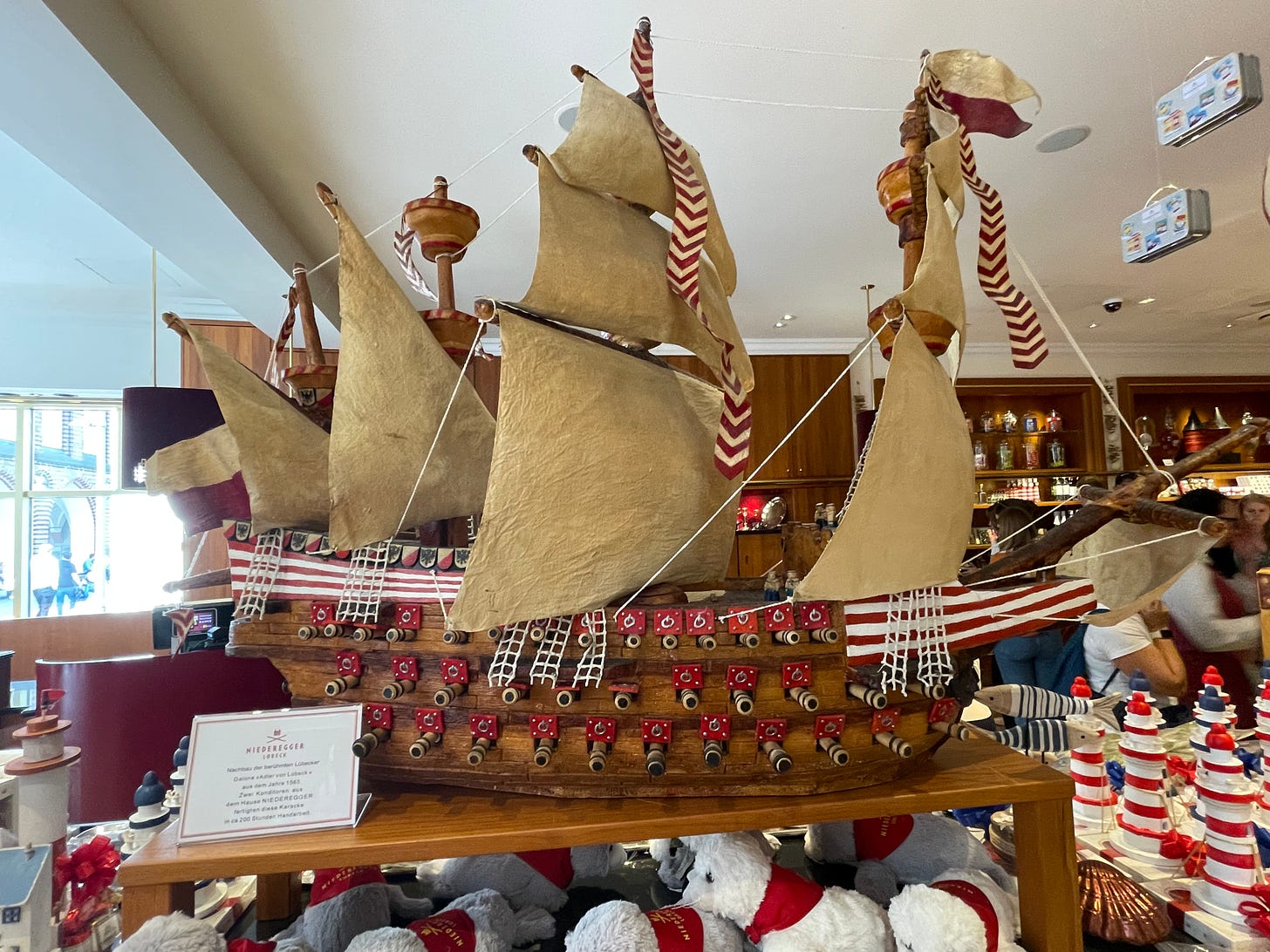On the road again ...
Quote of the week
“Nicht alles, was langwierig ist, ist langweilig.' (“Not everything that is lengthy is boring.”)
(Thomas Mann to his prospective publisher, in reference to the MS of the novel Buddenbrooks - cited by the Thomas Mann Buddenbrookhaus in Lübeck).”
― Thomas Mann
We left Sweden on Saturday 27 June, and decided to make a few stop overs on our way to Innsbruck. In the end we decided to go via Denmark and making our first stop at a favourite marina in Schleswig in Germany. We have been there several times before and it is a very informal place where you park your van where you can. In the vicinity there are two good restaurants; Mongolian BBQ and Restaurant Artemis. We decided on Greek food this time. For the first time in two months I felt a little bit of peace. June and July were very busy months and now it felt as if I were on a holiday. Even had time for a little bit of reading in the evening.
The next morning we headed towards Kiel and Lübeck. We were not over excited by Kiel so just drove around to have a look at the city. The area around the harbour seems to be the nicest one. In Lübeck we managed to find a parking, rather central, and from there walked to the old city gate, the Holsten Gate (Holstentor in German). The gate marks the western boundary of this old Hanseatic city. It was built in 1477 in Gothic style and is one of two remaining city gates. The other one is the Citadel Gate (Burgtor). It is an impressive building and rather beautiful for a gate entrance into the city.
From this side you can see the inscription 1477 SPQL 1871. The first date is when the gate was supposed to have been built, but now it is known to have been 1478. The date 1871 refers to the date when the German Empire was founded. “SPQL” as you might suspect is modeled on the Roman "SPQR" (Latin: Senatus populusque Romanus - the Senate and People of Rome) and here it stands for Senatus populusque Lubecensis. Not original though and only added in 1871.
We continued to the old city of Lübeck, with its old buildings. It was the first German city to be bombed during World War II which caused severe damage to the historic centre. It was not until 1948 that the waste and demolition rubble was removed. The old town was partly rebuilt and is part of the World Heritage Site. The cathedral and Church of St. Peter was only finished in the 1980s.
The most impressive building is the Rathaus (The Town Hall). I am not sure I have ever seen such a long building. It was difficult to get a photo since it was both high and long.

You can’t visit Lübeck without buying some marzipan which the city is famous for. Opposite the Town Hall was a fantastic marzipan shop, almost like a museum.
There are more exciting buildings and churches to look at, but our, or at least my, feet were aching so the last stop was …
… a cafe where we had coffee and the famous marzipan cake.
That was our tour of Lübeck and we walked along the river Trave, walked over the Holstenhafer bridge at the Musik- und Kongresshalle, and continued to our parking. Unfortunately, the house of Thomas and Heinrich Mann, now a museum, was temporarily closed. One of my favourite books ever is Buddenbrooks by Thomas Mann, and his story, partly, takes place in Lübeck. Mann received the Nobel Prize in Literature in 1929 with the motivation: “principally for his great novel, Buddenbrooks, which has won steadily increased recognition as one of the classic works of contemporary literature.” It is indeed a great book and is highly recommended if you have not yet read it.
On my blog since last newsletter
Paris in July, 2024 - A French dinner
Paris in July, 2024 - La vie secrète des écrivains by Guillaume Musso








